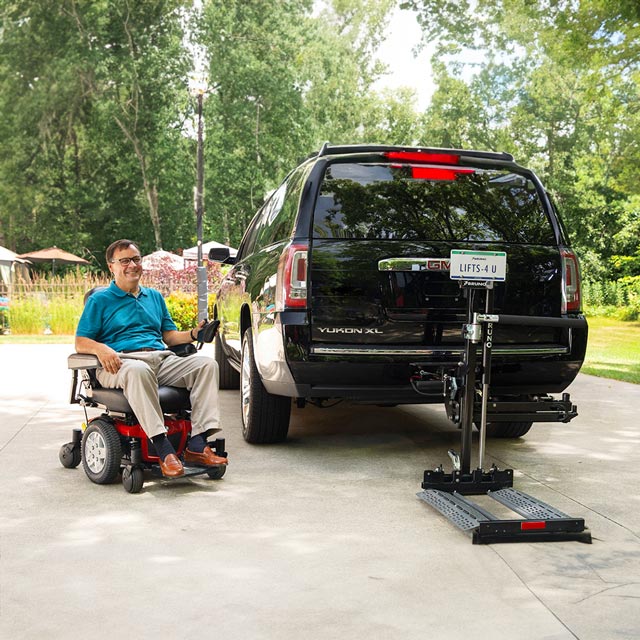Wheelchair Vans
Find a vehicle or adapt your own.
We have a number of pre-modified vehicles available for rent or purchase. Or we’ll help you select the right equipment and professionally install everything you need to get on the road.
Wheelchair Vans
Rent or buy a fully accessible vehicle that’s already ready to roll.
We carry vans pre-fitted with wheelchair equipment, available for both purchase and rental. View our inventory and learn more on our wheelchair vans website or stop by 12741 Q Street in Omaha to view them in person.
Hand Controls
Our adaptive devices can help you drive despite limited mobility.
You can drive a vehicle with hand controls and/or adaptive automotive products and devices. These adaptive vehicle control products are commonly prescribed by rehabilitation centers and installed by mobility equipment dealers and installers who specialize in vehicle modifications. That includes us!
Driver rehabilitation specialists perform comprehensive evaluations to identify the adaptive equipment most suited to your needs. They assess the type of seating needed and your ability to exit and enter the vehicle. They provide advice on the purchase of modified vehicles and recommend appropriate wheelchair lifts or other equipment for a vehicle you own. The use of wheelchair car and van hand controls usually requires the driver to take and pass a special training class which educates on the nuances of driving with the controls.
There are two main types of automotive adaptive controls—those that provide an external source of power to actuate existing vehicle controls and those that modify OEM components to alter the operation of vehicle control systems. Generally, these are referred to as servo-type motion control systems and reduced-effort or zero-effort control systems, respectively.
We can partner with you and your healthcare providers to find the right combination of tools to get you behind the wheel.
Vehicle Lifts
Whether you’re driving or along for the ride, never leave home without your chair or scooter.
We have a variety of vehicle lifts available so you can live life on the go and enjoy independence. Our vehicle lifts ensure safety while putting your mobility challenges in the backseat. Plus, the Kohll’s Rx mobility professionals offer expert installation.

Turney & Valet Seats
Get Seated Easily and Safely
The BraunAbility Turny® Evo mobility seat is the #1 selling handicap vehicle transfer seat for SUVs, trucks, and vans that moves completely outside the vehicle and lowers it down to your desired level. This makes it easier for you to sit down or transfer from a wheelchair. Once you're seated, push a button and the Turny Swivel Car Seat will lift you inside the vehicle. It's a simple yet very effective way to make your truck or SUV more accessible.
